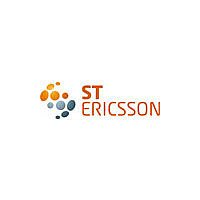ISP1161ABD ST-Ericsson Inc, ISP1161ABD Datasheet - Page 82

ISP1161ABD
Manufacturer Part Number
ISP1161ABD
Description
IC USB HOST/DEVICE CTRLR 64-LQFP
Manufacturer
ST-Ericsson Inc
Datasheet
1.ISP1161ABD.pdf
(135 pages)
Specifications of ISP1161ABD
Controller Type
USB 2.0 Controller
Interface
Parallel
Voltage - Supply
3.3V, 5V
Current - Supply
47mA
Operating Temperature
-40°C ~ 85°C
Mounting Type
Surface Mount
Package / Case
64-LQFP
Lead Free Status / RoHS Status
Lead free / RoHS Compliant
Other names
568-1165
ISP1161ABD,157
ISP1161ABD,157
Available stocks
Company
Part Number
Manufacturer
Quantity
Price
Company:
Part Number:
ISP1161ABD
Manufacturer:
ROHM
Quantity:
2 747
Part Number:
ISP1161ABD
Manufacturer:
PHILIPS/飞利浦
Quantity:
20 000
Company:
Part Number:
ISP1161ABD-S
Manufacturer:
ST-Ericsson Inc
Quantity:
10 000
Company:
Part Number:
ISP1161ABD-T
Manufacturer:
ST-Ericsson Inc
Quantity:
10 000
Philips Semiconductors
9397 750 13962
Product data
11.3.4 Endpoint initialization
11.3.5 Endpoint I/O mode access
11.3.6 Special actions on control endpoints
In response to the standard USB request, Set Interface, the firmware must program
all 16 ECRs of the ISP1161A’s DC in sequence (see
endpoints are enabled or not. The hardware will then automatically allocate FIFO
storage space.
If all endpoints have been configured successfully, the firmware must return an empty
packet to the control IN endpoint to acknowledge success to the host. If there are
errors in the endpoint configuration, the firmware must stall the control IN endpoint.
When reset by hardware or via the USB bus, the ISP1161A’s DC disables all
endpoints and clears all ECRs, except for the control endpoint which is fixed and
always enabled.
Endpoint initialization can be done at any time; however, it is valid only after
enumeration.
When an endpoint event occurs (a packet is transmitted or received), the associated
endpoint interrupt bits (EPn) of the DcInterrupt register will be set by the SIE. The
firmware then responds to the interrupt and selects the endpoint for processing.
The endpoint interrupt bit will be cleared by reading the DcEndpointStatus register
(ESR). The ESR also contains information on the status of the endpoint buffer.
For an OUT (= receive) endpoint, the packet length and packet data can be read from
ISP1161A’s DC using the Read Buffer command. When the whole packet has been
read, the firmware sends a Clear Buffer command to enable the reception of new
packets.
For an IN (= transmit) endpoint, the packet length and data to be sent can be written
to ISP1161A’s DC using the Write Buffer command. When the whole packet has been
written to the buffer, the firmware sends a Validate Buffer command to enable data
transmission to the host.
Control endpoints require special firmware actions. The arrival of a SETUP packet
flushes the IN buffer and disables the Validate Buffer and Clear Buffer commands for
the control IN and OUT endpoints. The microcontroller needs to re-enable these
commands by sending an Acknowledge Setup command.
This ensures that the last SETUP packet stays in the buffer and that no packets can
be sent back to the host until the microcontroller has explicitly acknowledged that it
has seen the SETUP packet.
Rev. 03 — 23 December 2004
Full-speed USB single-chip host and device controller
Table
© Koninklijke Philips Electronics N.V. 2004. All rights reserved.
66), whether the
ISP1161A
81 of 134
















